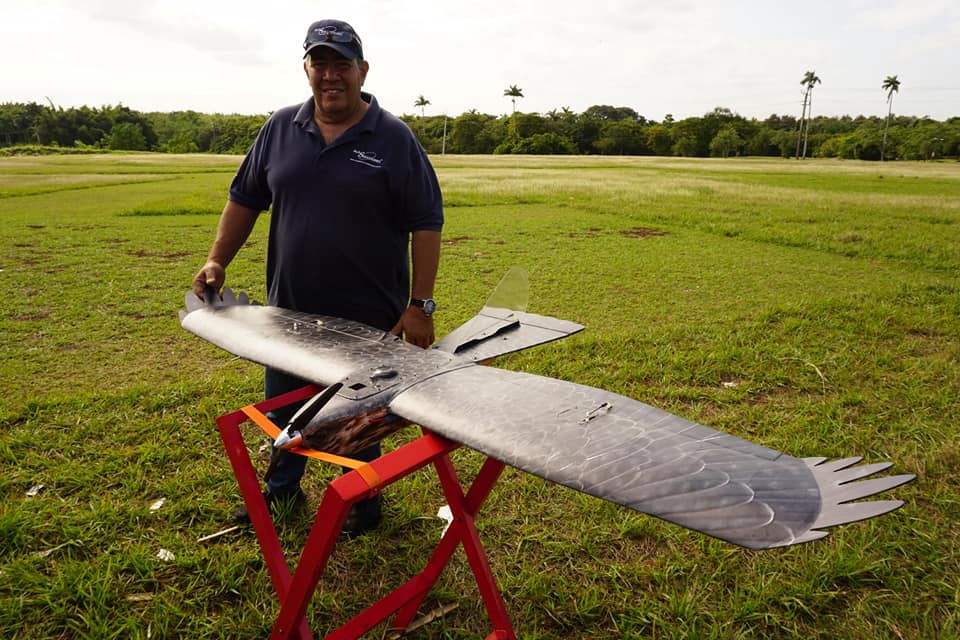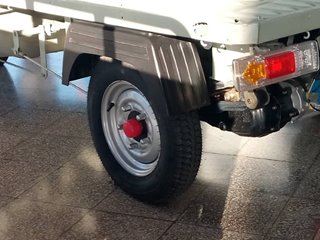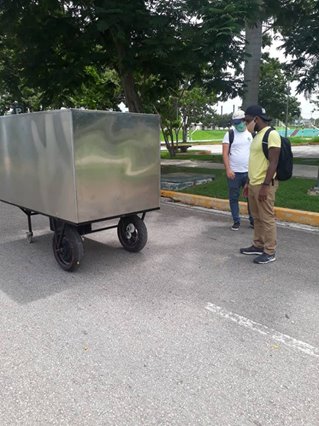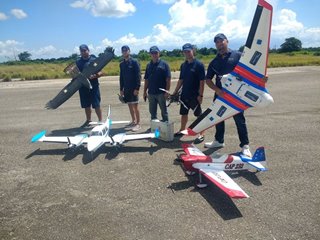Home-Grown Solutions Enable Cubans to Overcome Limits
Home-Grown Solutions Enable Cubans to Overcome Limits


Working against a long-running economic crisis, Cuban engineers develop their own technology, such as this drone.
The streets of Havana are famous for their vintage cars kept in working condition. While it is true that most of the automobile fleet in Cuba is much newer, the old cars are symbolic of the way Cubans have found innovative technological solutions to economic difficulties.
The island nation is gripped with a long-running economic crisis aggravated by, among other factors, the COVID-19 pandemic and the U.S. embargo. In the current context, the island not only suffers shortages of basic supplies such as fuel, but also a lack of parts and pieces for various equipment. Due to limits on access to markets and financial credit, science and innovation have become a matter of survival aimed at revitalizing some activities and making the most of the few resources available to the nation. Also, they are proof of what Cuban engineers are capable of in unfavorable situations.
Here are three engineering solutions that display creative resistance and resilience in Cuba.
The energy crisis in Cuba has led to power cuts and fuel conservation measures. One sector that has been hard hit is cargo delivery, which often relies on small tricycles imported from the Italian manufacturer Piaggio (known for their Vespa scooter). To increase the resiliency of the delivery sector, a project was started to replace the internal combustion engines and powertrain of the Piaggio tricycles with electric systems.
The work, which is already in the prototype testing phase, is the result of cooperation between the Copextel company, the faculty of mechanical and industrial engineering of the Central University “Marta Abreu” of Las Villas, and the Angel Villareal Bravo Industrial Company.
“The idea arose from the low coefficient of technical availability of Piaggio tricycles in Copextel, motivated by the lack of a stable supply of parts, pieces, and accessories, as well as by the drastic decreases in fuel allocations,” said Sergio Consuegra, one of the experts of this project.
So far, the assembly of the prototype has saved more than $840 (U.S.) compared to the purchase of a new vehicle. Estimates indicate that, in terms of transportation, the re-motorization of 105 of these vehicles would save more than $33,500 (U.S.).
The initiative could be extended to the whole country, with great impact in areas such as the national postal company and the recovery of raw materials and recycling.
When faced with highly communicable diseases such as COVID-19, it is critically important to reduce the opportunities for infection. One way to do that is to replace human services with automation. To that end, an autonomous vehicle was developed by professors and students of the Robotics and Mechatronics Group of the Technological University of Havana (CUJAE) in collaboration with the faculties of architecture and automation.
The vehicle, called the Palmiche Galeno, made it possible to send food from the dining room to the different facilities where infected people were located, up to six trips per day.
According to Adrián Rodríguez, dean of the university's faculty of automation and biomedicine, Palmiche “travels at a speed of about six kilometers per hour for about 150 meters” and “offers the possibility of moving the food autonomously, avoiding human contact.”
Thanks to Palmiche, the kitchen staff minimized contact with the patients, cutting the chances of infection.
The robot, with pre-programmed routes, operates “without any supervision of its work,” said Juan Antonio Piñera, another professor at CUJAE. “It is designed to transport large amounts of weight around 400 to 500 kilograms.”
In 2020, an updated robot called Palmiche Galeno Plus represented Cuba in an international robotics virtual tournament, where it won first place in the Innovation Pro Challenge category.
The government puts restrictions on the import of drone technology due to their cost. So the passion of three Cuban entrepreneurs for aeromodelling and drones led them to form the venture AlaSoluciones. The initiative offers technological solutions through the development and deployment of unmanned aerial vehicles.
In addition, they have the capacity to create and modernize computerized control machine tools and can offer technical advice wherever this service is requested.
“We created a drone for electronic falconry that was shaped like a sparrow hawk. The aim was to keep birds away from airports, to avoid accidents if any of the animals collided with aircraft engines,” said Luis Hernández Santana, a member of the team.
In addition to protecting airspaces, the company’s products and services can be very useful for precision agriculture, inspection of gas lines, electrical and communication towers, civil works supervision, aerial surveying, mapping, and surveillance of coasts and areas of interest.
Claudia Alemañy Castilla is a science and technology journalist based in the Canary Islands. She is the Engineering for Change Editorial Fellow. For more on development engineering, check out Engineering for Change.
The island nation is gripped with a long-running economic crisis aggravated by, among other factors, the COVID-19 pandemic and the U.S. embargo. In the current context, the island not only suffers shortages of basic supplies such as fuel, but also a lack of parts and pieces for various equipment. Due to limits on access to markets and financial credit, science and innovation have become a matter of survival aimed at revitalizing some activities and making the most of the few resources available to the nation. Also, they are proof of what Cuban engineers are capable of in unfavorable situations.
Here are three engineering solutions that display creative resistance and resilience in Cuba.
From Oil to Batteries
The energy crisis in Cuba has led to power cuts and fuel conservation measures. One sector that has been hard hit is cargo delivery, which often relies on small tricycles imported from the Italian manufacturer Piaggio (known for their Vespa scooter). To increase the resiliency of the delivery sector, a project was started to replace the internal combustion engines and powertrain of the Piaggio tricycles with electric systems.
The work, which is already in the prototype testing phase, is the result of cooperation between the Copextel company, the faculty of mechanical and industrial engineering of the Central University “Marta Abreu” of Las Villas, and the Angel Villareal Bravo Industrial Company.
“The idea arose from the low coefficient of technical availability of Piaggio tricycles in Copextel, motivated by the lack of a stable supply of parts, pieces, and accessories, as well as by the drastic decreases in fuel allocations,” said Sergio Consuegra, one of the experts of this project.
So far, the assembly of the prototype has saved more than $840 (U.S.) compared to the purchase of a new vehicle. Estimates indicate that, in terms of transportation, the re-motorization of 105 of these vehicles would save more than $33,500 (U.S.).
The initiative could be extended to the whole country, with great impact in areas such as the national postal company and the recovery of raw materials and recycling.
A Food Service Robot
When faced with highly communicable diseases such as COVID-19, it is critically important to reduce the opportunities for infection. One way to do that is to replace human services with automation. To that end, an autonomous vehicle was developed by professors and students of the Robotics and Mechatronics Group of the Technological University of Havana (CUJAE) in collaboration with the faculties of architecture and automation.
The vehicle, called the Palmiche Galeno, made it possible to send food from the dining room to the different facilities where infected people were located, up to six trips per day.
According to Adrián Rodríguez, dean of the university's faculty of automation and biomedicine, Palmiche “travels at a speed of about six kilometers per hour for about 150 meters” and “offers the possibility of moving the food autonomously, avoiding human contact.”
Thanks to Palmiche, the kitchen staff minimized contact with the patients, cutting the chances of infection.
The robot, with pre-programmed routes, operates “without any supervision of its work,” said Juan Antonio Piñera, another professor at CUJAE. “It is designed to transport large amounts of weight around 400 to 500 kilograms.”
In 2020, an updated robot called Palmiche Galeno Plus represented Cuba in an international robotics virtual tournament, where it won first place in the Innovation Pro Challenge category.
Let's Make a Drone
The government puts restrictions on the import of drone technology due to their cost. So the passion of three Cuban entrepreneurs for aeromodelling and drones led them to form the venture AlaSoluciones. The initiative offers technological solutions through the development and deployment of unmanned aerial vehicles.
In addition, they have the capacity to create and modernize computerized control machine tools and can offer technical advice wherever this service is requested.
“We created a drone for electronic falconry that was shaped like a sparrow hawk. The aim was to keep birds away from airports, to avoid accidents if any of the animals collided with aircraft engines,” said Luis Hernández Santana, a member of the team.
In addition to protecting airspaces, the company’s products and services can be very useful for precision agriculture, inspection of gas lines, electrical and communication towers, civil works supervision, aerial surveying, mapping, and surveillance of coasts and areas of interest.
Claudia Alemañy Castilla is a science and technology journalist based in the Canary Islands. She is the Engineering for Change Editorial Fellow. For more on development engineering, check out Engineering for Change.






.png?width=854&height=480&ext=.png)


